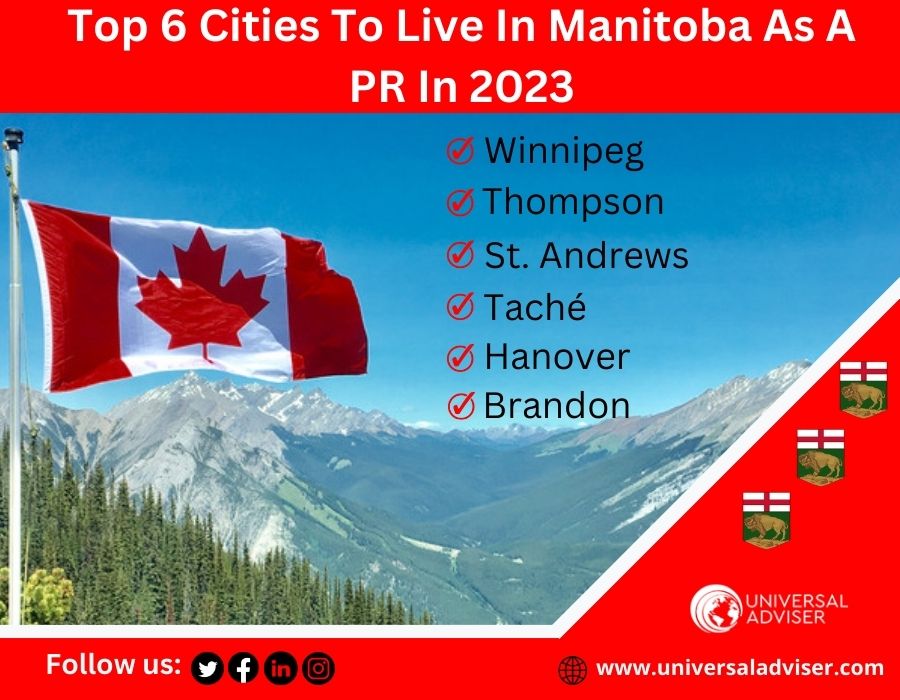
Top 6 Cities to Live In Manitoba as A PR In 2024

Top 6 Cities to Live In Manitoba
Manitoba's Top 6 Best Places to Live
Are you considering relocating to Manitoba but remain in search of the best area? Not to worry. Here are Manitoba’s top six places to live and work.
Winnipeg
Thompson
St. Andrews
Taché
Hanover
Southeast Manitoba’s thriving municipality of Hanover. It’s located around 20 minutes outside Winnipeg in a prosperous agricultural area. There are five cities in it:
- Mitchell
- Blumenort
- Grunthal
- New Bothwell
- Kleefeld
Hanover’s most significant industry is agriculture, with many locals working in the sector or in related businesses and support services. Strong alternative economic initiatives are provided by manufacturing, building, and retail in the community.
Brandon
How to immigrate to Manitoba?
Permanent Residency
ou can use Manitoba’s different permanent residency programs to immigrate to Canada. The Provincial Nominee Programs and the Express Entry system are the most well-known among them.
Express Entry system
Due to its rapid application processing, the Express Entry scheme is the most often used immigration program for skilled foreign employees. The IRCC’s emphasis on retaining and reconnecting families as soon as possible accounts for the speedy processing period. If a candidate wants to use the Express Entry system to submit an immigration application to Canada, they must first register an Express Entry profile account.
Provincial Nominee Programs
The PNP for Manitoba includes the following streams:
- Manitoba International Education Stream
- Business Investor Stream
- Skilled Worker in Manitoba Stream
- Skilled Worker Overseas Stream
List Of PNP In Canada
- Alberta Immigrant Nominee Program
- British Columbia Provincial Nominee Program (BCPNP)
- Manitoba Provincial Nominee Program (MPNP)
- Newfoundland and Labrador Provincial Nominee Program (NLPNP)
- New Brunswick Provincial Nominee Program (NBPNP)
- Nova Scotia Provincial Nominee Program (NSPNP)
- Northwest Territories Nominee Program (NTNP)
- Ontario Immigrant Nominee Program (OINP)
- Prince Edward Island Provincial Nominee Program (PEI PNP)
- Quebec Skilled Workers Program (QSWP)
- Saskatchewan Immigrant Nominee Program (SINP)
- Yukon Nominee Program (YNP)
Temporary Residency
If your application for Canadian permanent residency is denied, you can use work permits to become a temporary resident (TR), which will set you on the route to finally becoming a PR.
Work Permits
- An employer-specific work permit
- An open work permit.
IEC Working Holiday Visa Program
Apply For Visa
Trusted by 50,000 Satisfied Client
Free Immigration Assessment
Trusted by 50,000 Satisfied Client
Check Your Eligibility in 5 Minutes
Trusted by 50,000 Satisfied Client
Get Free Consultation
Trusted by 50,000 Satisfied Client
Get Free Consultation
Trusted by 50,000 Satisfied Client
Get Free Consultation
Trusted by 50,000 Satisfied Client

